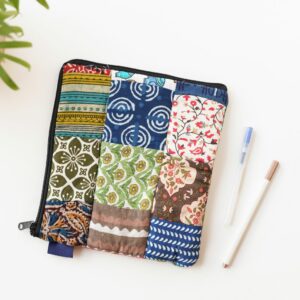Yesterday I came home with a noticeable tear on my shirt. While one part of me was in pain to let go of my favorite shirt, the other part was all frightened about how my mother would react.
But guess what?
Instead of chiding me for my carelessness, my mother simply took away the shirt to wash and dry it. The next day, she collected all the clothes that I could no longer wear or donate, and started cutting little pieces of cloth from each. What do I see? She stitched them together to make a vibrant cushion cover!
This, simply, is patchwork. You creatively convert patches/pieces of various clothes into a useful and attractive item by the technique of stitching swatches of cloth together.
But why is it so popular?

First, it is a work of beauty. You can see symmetrical patterns and designs on bed sheets, quilts or even dresses made from different materials. It is very appealing and of course, it adds to your aesthetics.
More importantly, it upcycles your cloth waste. The textile industry discards 92 million tons of waste each year. Surprisingly, only 12% of the material the industry uses is recycled.
It reduces the textile waste entering water bodies or landfills. The textile industry contributes 20% of water pollution and so, why go to the lakes and run drives, when you can start from your home?
With these numbers, patchwork is indeed a silver lining.
It was adopted by the fashion industry in the 1960’s not just as a technique but as a “look” of hippie culture. Its origins date much further back: nearly 3,500 years ago! It became popular in Europe and Asia over the centuries. In the 1700s and 1800s, patchwork in the New World represented major world events or biblical scenes on bed sheets. These types of designs were also displayed at the Great Exhibition of 1851.
Today, with the focus on circular fashion, patchwork is making a comeback. Reality show “Next in Fashion” winner Nigel Xavier is known for his patchwork and denim creations. Women’s Wear Daily declared Patchwork as the look of 2021, and increasingly, celebrity designers are turning their attention to patchwork as well.
Apart from clothes, patchwork has traditionally been used to make various products–from pencil pouches to large comforters–and the trend is here to stay!
From being a necessity for women to stitch up little holes and repairs to being a show stopper at fashion shows, parallelly encouraging a circular economy, patchwork is a go-to for today’s conscious sustainable lifestyle.
Image courtesy: Don Mc Lean
Our Patchwork products



